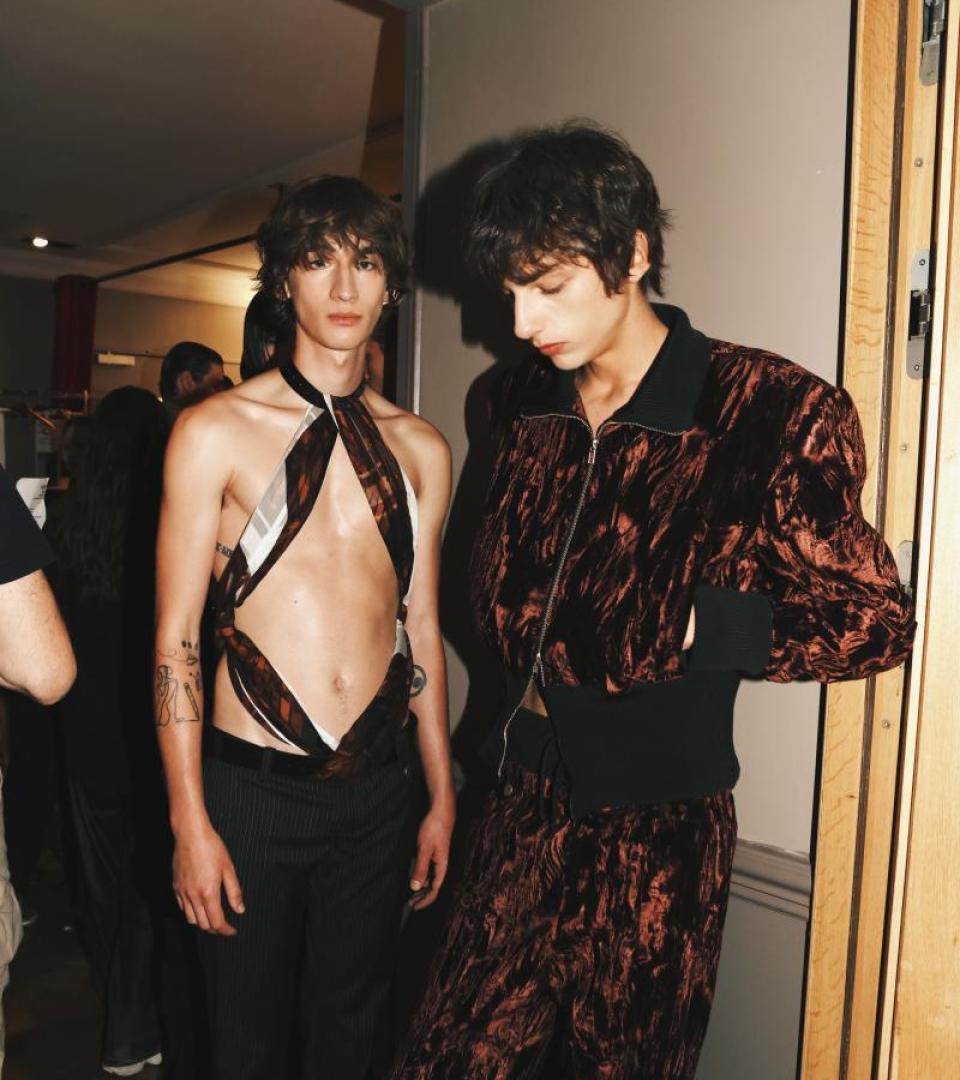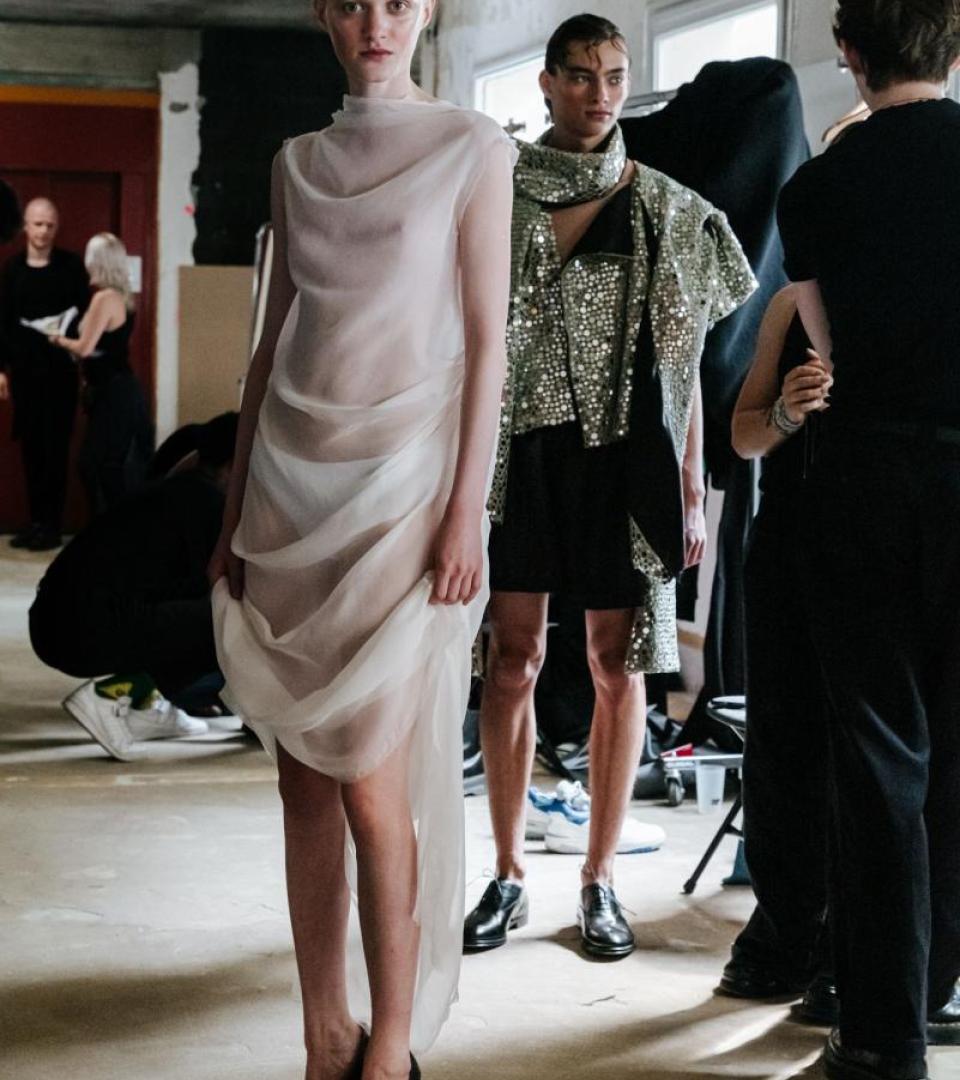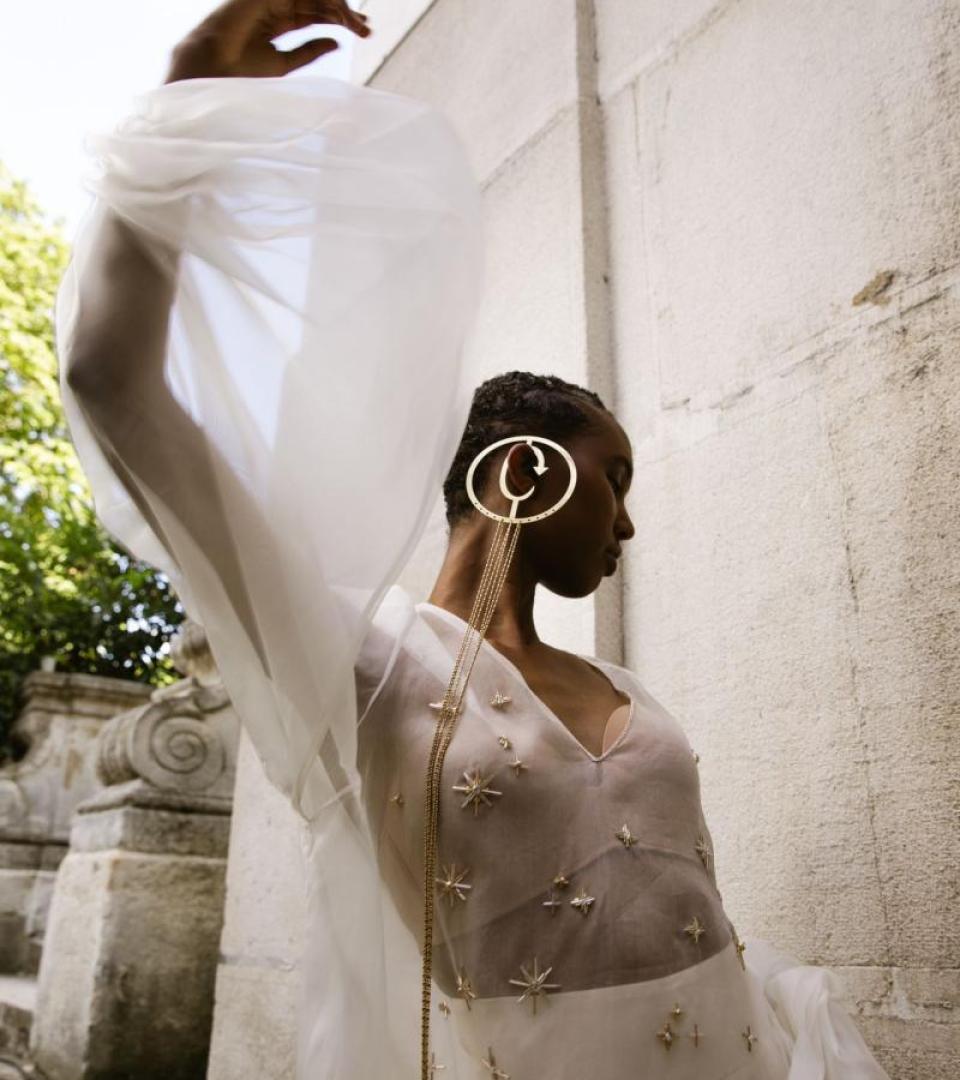Kazuhide Sekiyama
Kazuhide Sekiyama, born in Tokyo in 1983, was still attending Keio University studying bioinformatics when he founded Spiber in 2007, the biotech venture company which creates sustainable and high-performance materials in various industries such as apparel, food, automotive, and more. The process is unique, based on the Brewed Protein, a new material platform utilising fermentation technology inspired by nature's diversity and circularity. Thanks to Seykiyama, who is now Director and Representative Executive Officer, there are many brands that use Spiber’s highly sustainable fabrics including Yuima Nakazato for in Haute Couture, and Y's by Yohji Yamamoto, Sacai, The North Face, Goldwin, Nanamica, and Woolrich for Ready-to-Wear.
How do you think Haute Couture might embrace technology while maintaining the dream of the uniqueness?
With all due respect, it's truly remarkable how the artisans in Haute Couture have been pioneers, consistently pushing the boundaries of creativity beyond clothing. Yet I can't help but think that with the thoughtful use of technology, they could take their craft even further, introducing concepts that honour tradition while also being visionary. It's fascinating how, the more innovative the concept, the more captivating and special it seems. For instance, Japanese couture designer Yuima Nakazato in collaboration with Hosoo, a renowned Japanese weaver and kimono curator, has presented nishijin-ori, a traditional kimono textile with a history spanning 1,200 years from Kyoto by introducing Brewed Protein fibres and silk to craft in his Fall-Winter 2021 collection. As a result, they created a never-before-seen shade of metallic blue. I believe that by blending tradition with innovation, there's a potential to captivate and inspire, often found in novel concepts that embody uniqueness. It's through this harmonious integration that we aim to honour the legacy of Haute Couture while humbly embracing the possibilities of tomorrow.
Traditionally Haute Couture is defined by craftsmanship and handwork. In what ways are proteins that become fabrics considered to be similar?
The dedication and high standards of excellence and craftsmanship in Haute Couture resonate deeply with our journey in developing Brewed Protein fibres. Similar to artisans who dedicate years to perfecting their techniques and handwork ability to create a unique piece, we spent nearly two decades refining our technology and fibres to attain the necessary level of precision and innovation. It was a process of constant adjustment, often down to minute details like temperature variations of just 1 degree Celsius or timing variances of a single second, all while ensuring our materials maintained impeccable quality. Additionally, in our pursuit of excellence, we went as far as designing and constructing over 800 pieces of machinery tailored specifically to our novel material, as existing machinery simply couldn't meet our needs. Although we come from different backgrounds, I believe the passion and commitment that Haute Couture designers invest in creating beautiful works of art are truly admirable. We are extremely grateful that our material has been used for such special stages, and we are honoured to contribute to their extraordinary creations.
How might you increase the awareness about your technologies?
One way to raise awareness about our technologies is to partner with visionary designers and brands known for their exceptional creativity. Brewed Protein materials made its debut on the Sacai's men's runway in 2019. Since then, Yuima Nakazato has been adopting the materials into his designs through the last ten couture collections. In 2022, Eye Junya Watanabe Man released a hoodie crafted from Brewed Protein fibres, marking another significant use of the material. Our recent collaborations with Yohji Yamamoto brands and Kering Group and its Material Innovation Lab further expand our global reach and shared values. When these influential figures use and promote our materials, it naturally garners attention and builds trust among consumers. Our innovations are new and might be hard for the general public to understand at first; but seeing respected designers create amazing products with them makes it more intuitive. By showcasing impressive and stylish products made from our materials, we hope to spark interest and curiosity about Spiber and our work.
What does a protein-made fabric have over other fabrics?
Brewed Protein fibres, as the name implies, are fibres made from protein. This animal-free, plant-derived material is uniquely created through the magic of fermentation. With their fine fibres, which can be controlled as fine as the finest cashmere or silk, they offer a unique luxurious soothing feel. When used at 100 percent, Brewed Protein fibre is less prone to pilling than cashmere or wool, doesn't fibrillate like silk, and is versatile enough to be worn in spring, fall, and winter. Of course, blending it with other materials can expand the range of textures even further. We expect our materials to be more affordable than animal fibres in the future, which should encourage more brands to adopt them. As the population grows and dynamics shift, the demand for clothing and materials continues to rise. While the aforementioned characteristics appeal to consumers, on a societal scale, we see Brewed Protein materials as potential game-changers. They offer solutions to various issues such as microplastic pollution from synthetic fibres, desertification caused by cashmere goat farming, and greenhouse gas emissions from animal agriculture. We're now ready to offer materials on a larger scale. While many in the industry are striving to improve society by developing new materials and technologies, we understand from our experiences that commercializing these materials presents its own set of challenges. Thus, we aim to create a successful case and pave the way for other innovators who share our goals.
With your technology, can you produce only fabrics or sustainable embellishments, for instance?
Yes, our technology holds the potential to produce a variety of items beyond fabrics, including beads, buttons, and glitters. We have already demonstrated this by crafting resin-like accessories from Brewed Protein material, which were showcased during Haute Couture Week. We are also developing protein materials that can function as new kinds of hide and waterproof membranes. This flexibility allows us to create a wide range of sustainable fashion products, offering new possibilities for designers and manufacturers. By fine-tuning our production process, we can transform the protein powder we create into fibres not only for apparel products but also for food ingredients, resin-like materials, films, glue, and more. This adaptability enables us to serve a wide range of industries with our innovative materials.
Do you use AI? In what ways do you think AI might benefit fashion?
Absolutely, we extensively utilise AI in our operations. To us, AI is as indispensable as a computer because it aids in designing our protein materials, streamlining production processes, and facilitating various creative tasks. While AI may spark debate within the fashion industry, I firmly believe it can never overshadow the value and integrity inherent in the meticulous craftsmanship of designers. I trust that those who genuinely appreciate and cherish fashion will recognise this. If we can harness AI to enhance production efficiency, optimise logistics, calculate environmental impacts, and alleviate the burdensome aspects of their work, it would be a significant step forward.
What impact might you hope to have on Haute Couture?
Once one major challenge is solved, another inevitably emerges; history has proven this. In other words, the continual exercise of creative ingenuity is vital for shaping the future. I truly believe that those who think outside the box and find creative ways to tackle today’s problems are doing an enormous service to our planet and our future, regardless of their industry. I also believe that designers hold the key to adding value to both the fashion industry and society at large. By attending to the needs of each era and adeptly expressing them, designers play a crucial role. Furthermore, I see Spiber and Brewed Protein materials as embodiments of this potential. We aspire to make meaningful contributions to the world of Haute Couture, inspiring designers and creators to draw inspiration from these innovative materials and craft new visions of beauty and fashion. Ultimately, our aim is for these innovations to permeate the entire fashion industry, sparking diverse transformations.
This interview has been lightly edited.



